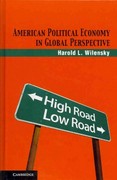Discuss the different types of inflation.
What are the three theories about inflation.
(i) Describe the main benefit of credit ratings for investors in fixed interest investments. [1] A bank owns a risky vanilla 10-year corporate bond ("Corporate Bond") of par value E100 million and a current market value of (100 million which it has been struggling to sell in the market. The bank is therefore proposing to raise cash by restructuring the Corporate Bond into a senior tranche ("Senior Note") and an equity tranche using a bankruptcy-remote Special Purpose Vehicle (SPV). The bank is proposing that the Senior Note will be $55 million notional, $55 million market value and will be sold to individual investors. The Senior Note will be structured so that it has no interest rate sensitivity on issue. The equity tranche will be retained by the bank. (ii) Draw a simple diagram showing both the cashflows that will arise when the securitisation is set up and throughout the life of the SPV. [3] iii) Explain how investing in the Senior Note reduces the default risk for an investor compared to investing in the underlying Corporate Bond. [1] A credit rating agency (CRA) is determining the rating of the Senior Note by carrying out scenario analysis. The CRA calculates the loss to the Senior Note under two scenarios: an immediate default of the Corporate Bond; and an increase in interest rates of 2% and immediate default of the Corporate Bond. The CRA selects the highest rating possible for the Senior Note that satisfies both of the thresholds in the table below. The CRA assumes a recovery value of 40% of the market value of the Corporate Bond just prior to default. The CRA calculates the impact of interest rate movements on the Corporate Bond by using a duration of 10 years (with no allowance for convexity) Rating Criteria 1: Senior Note market Criteria 2: Senior Note market of Senior value loss on immediate value loss if interest rates rise Note default of Corporate Bond by 2% and then Corporate Bond must be no greater than defaults must be no greater than. AAA Com $10m AA Elom $20m A $26m $30m BBB $36m $40m(iv) (a) Calculate the loss on the Senior Note on immediate default of the Corporate Bond. (b) Calculate the approximate loss on the Senior Note if rates rise by 2% and then the Corporate Bond defaults. /Hint: the market value of the Senior Note is not sensitive to changes in interest rates.] (c) Show that the rating agency will select a rating of A, using the results from parts (a) and (b), or otherwise. [4] (v) Outline the weaknesses of the CRA'S approach to rating the Senior Note. [3] The bank seeks to improve the attractiveness of the Senior Note by adding a pay fixed interest rate swap with duration 5 years to the SPV. (vi) Comment on the implications of adding this interest rate swap to the SPV. [4] (vii) Determine the minimal notional of the interest rate swap required to improve the rating to AA. 121 (vili) Suggest ways that the bank could alter the securitisation to achieve a AAA rating from the CRA for the Senior Note. 121In the Vasicek model, the spot rate of interest is governed by the stochastic differential equation: dr, = a(b -r, )di + adB, where B, is a standard Brownian motion and a, b > 0. A stochastic process is defined by s, = e"r, (1) Solve the equations above to find s, and hence show that: 7, =b+(r -ble # +fe(s-")dB, (1i) Find the probability distribution for: (a) r, in the limit when f is large ( b ) a zero coupon bond of maturity









